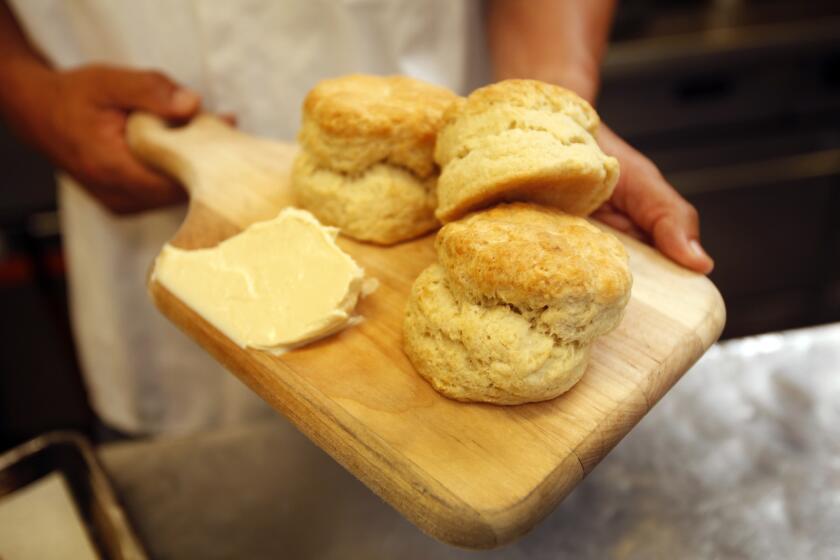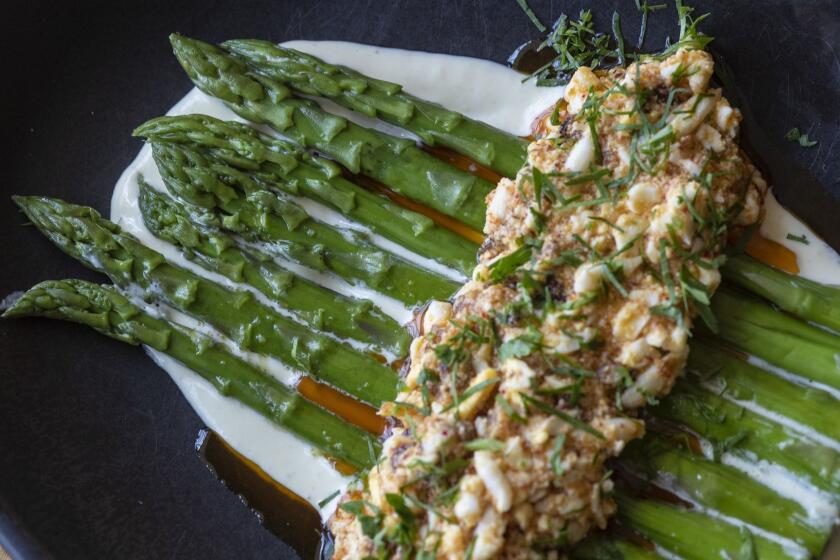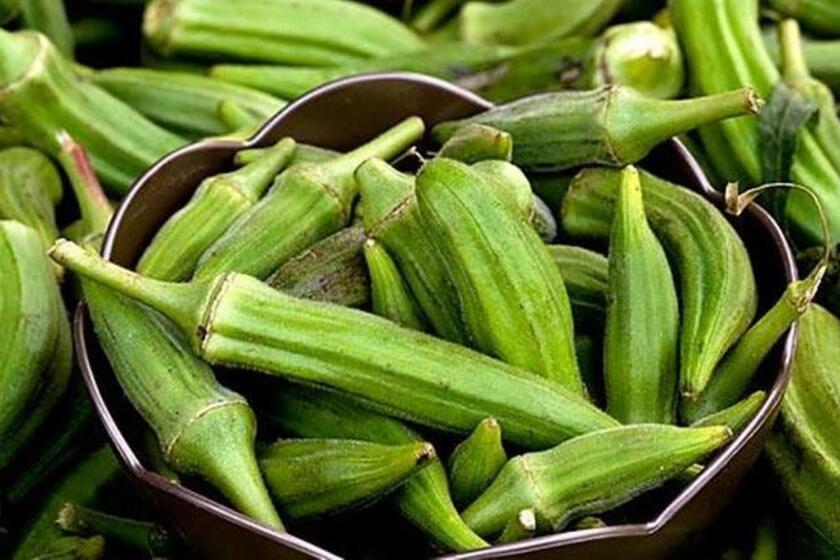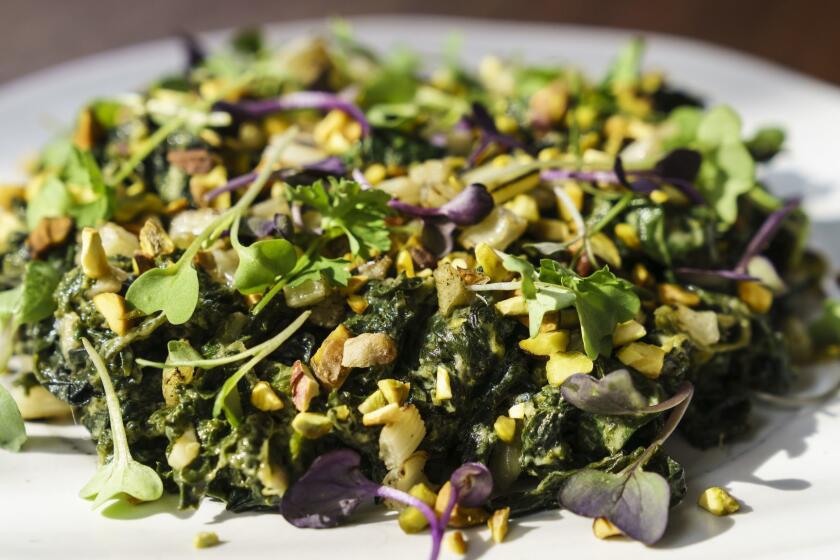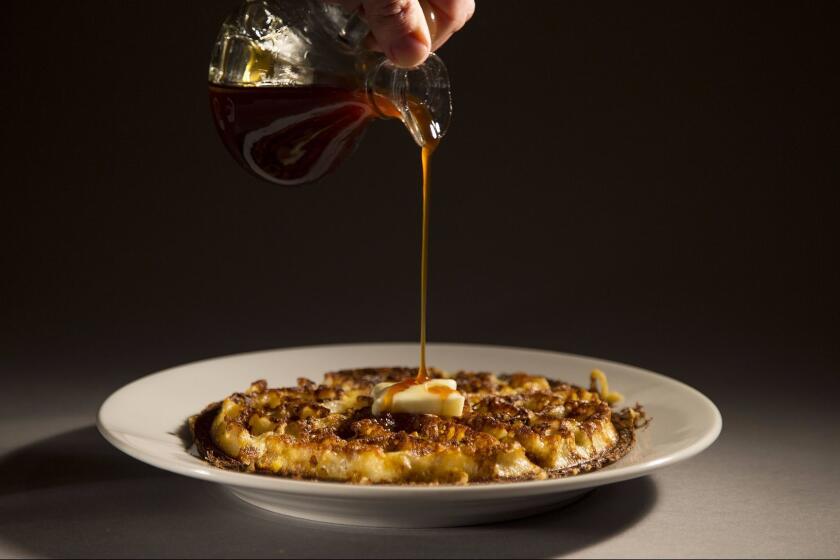What cooking can teach us beyond the kitchen
- Share via
Last month, we launched this newsletter and redesigned our recipe site with the same intention behind all of our cooking content: To bring the food of Los Angeles and by extension the world into your home kitchens. Cooking is more than just following a recipe, it’s learning. Sometimes, the lessons are technical — how to stir-fry vegetables or freeze them — and other times, they go deeper.
We learn from chefs and cooks across the city and country and pass their knowledge on to you by sharing their dishes and the stories behind them.
Get our Cooking newsletter.
Your roundup of inspiring recipes and kitchen tricks.
You may occasionally receive promotional content from the Los Angeles Times.
Oftentimes, recipes come with culture and history. They can tell the journey of the creator and her family, heritage and life experiences. When you cook a dish, you can get to know the person behind it.
In our Food section relaunch last year, we described our mission as providing “a window into a culture or life or time that isn’t your own, a mirror that reflects what you know in a way that helps you see it differently or more clearly.” Reading stories can help you see, think and understand; cooking recipes can help you smell, feel, taste and experience what others do if you approach them with respect, humility, gratitude and openness.
Buttermilk biscuits with burnt orange honey butter
Biscuits are always delicious and they’re even better when slathered with this citrus-lavender honey-butter from chef Govind Armstrong.
Chilled Asparagus with Green Garlic Mayonnaise and Dijon Egg Salad
Chef Keith Corbin of Alta Adams punctuates his creamy egg salad with toasted bread crumbs. That crunchy move is genius in this ideal end-of-spring dish. His formulas for homemade mayo and Dijon vinaigrette would be delicious with any other vegetables too.
Whipped Cornmeal with Okra
If you don’t yet know Edna Lewis, you want to buy her cookbooks. This four-ingredient dish is just one example of how Lewis transforms fresh ingredients into something magical. Here, she uses okra to lighten buttery slow-simmered cornmeal.
California Greens
Ray Barrett makes California soul food. If you’re wondering what that means, just try this dish: creamy avocado sauce bright with lime coats wilted leafy greens.
Brown sugar kitchen’s cornmeal waffles with apple cider syrup
To make crisp and deeply flavorful waffles, chef Tanya Holland of Brown Sugar Kitchen adds cornmeal to her batter. While that rests, you can make her accompanying cider syrup.
Ask the cooks
In regard to the Citrus Marmalade recipe recently published:
Do you think putting the glass jars in the microwave would sterilize them? Can then just run boiling H2O over the lids. Seems easier than a water bath, which has always been the primary disincentive for me to try canning and preserving.
— Toby Horn, Miracle Mile
I completely understand how you feel, Toby. That’s why I usually opt to make easy refrigerator jams, which don’t require water baths. Instead, you simply hand-wash jars and their lids with dish soap and the hottest-possible water from your sink and rinse well. You also can run the jars through the dishwasher, but the lids should still be hand-washed.
Spoon just-simmered preserves into the jars, screw on the lids fingertip-tight, then let sit at room temperature until cool enough to grab. Put them in the fridge and keep them there for up to 3 weeks. You also can store them in airtight containers in the freezer for up to a year.
The only reason you would need to do a water bath — sterilizing empty jars and lids in boiling water, then boiling the jam-filled jars again — is if you want to make your preserves shelf-stable at room temperature. I opt for the hassle when I want to ship jars of jam to faraway friends or make a huge batch to keep in the pantry for up to a year. Once opened, the jars need to be refrigerated.
Sheltering at home during quarantine gave me the time to make water-bath-canning feel like a worthwhile project. If you decide to pursue it and want to learn more, the USDA has a thorough guide to safe home canning. Otherwise, fill just-washed jars with marmalade, compotes or jams and stack them in the fridge.
Have a cooking question?
Eat your way across L.A.
Get our weekly Tasting Notes newsletter for reviews, news and more.
You may occasionally receive promotional content from the Los Angeles Times.
